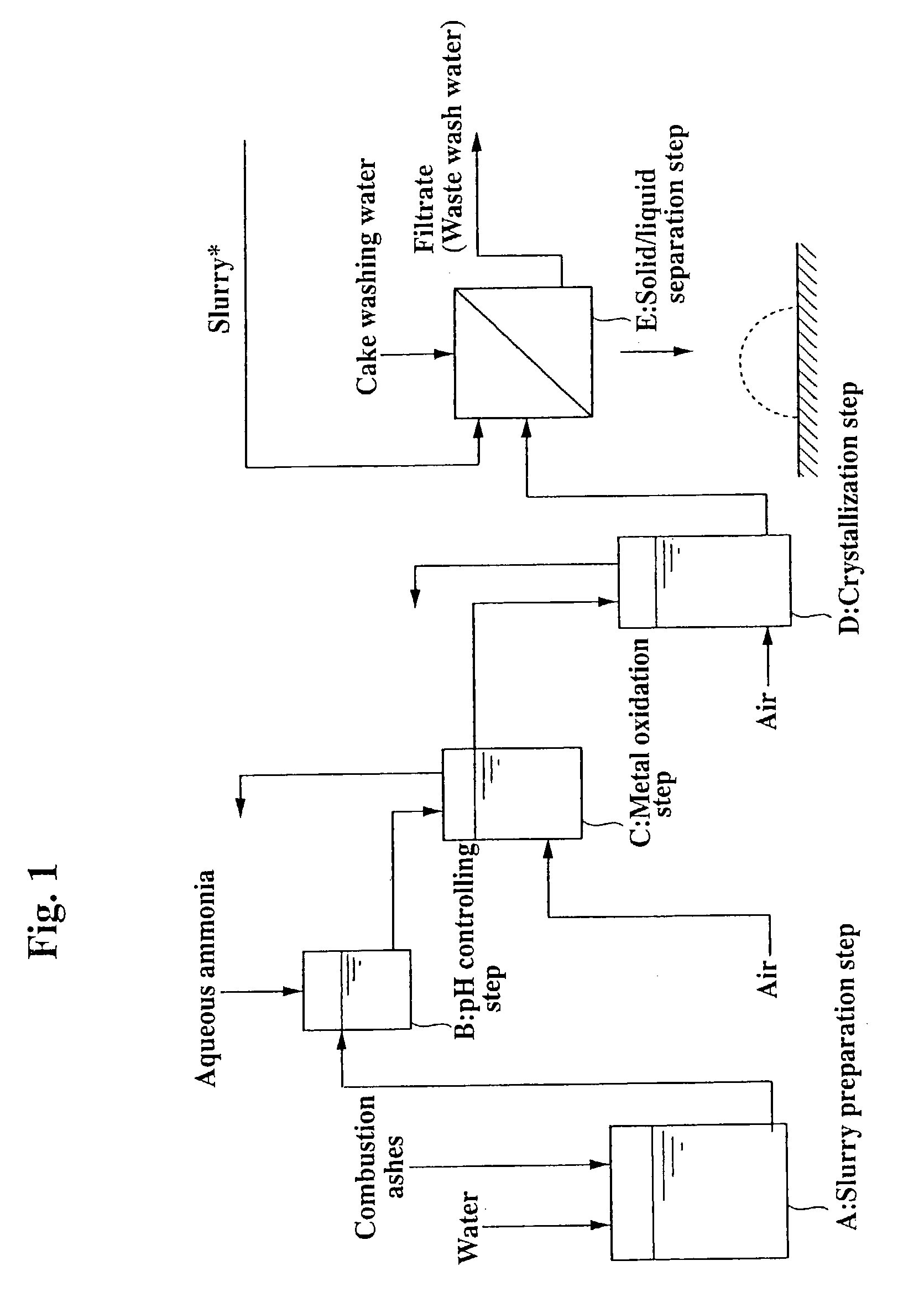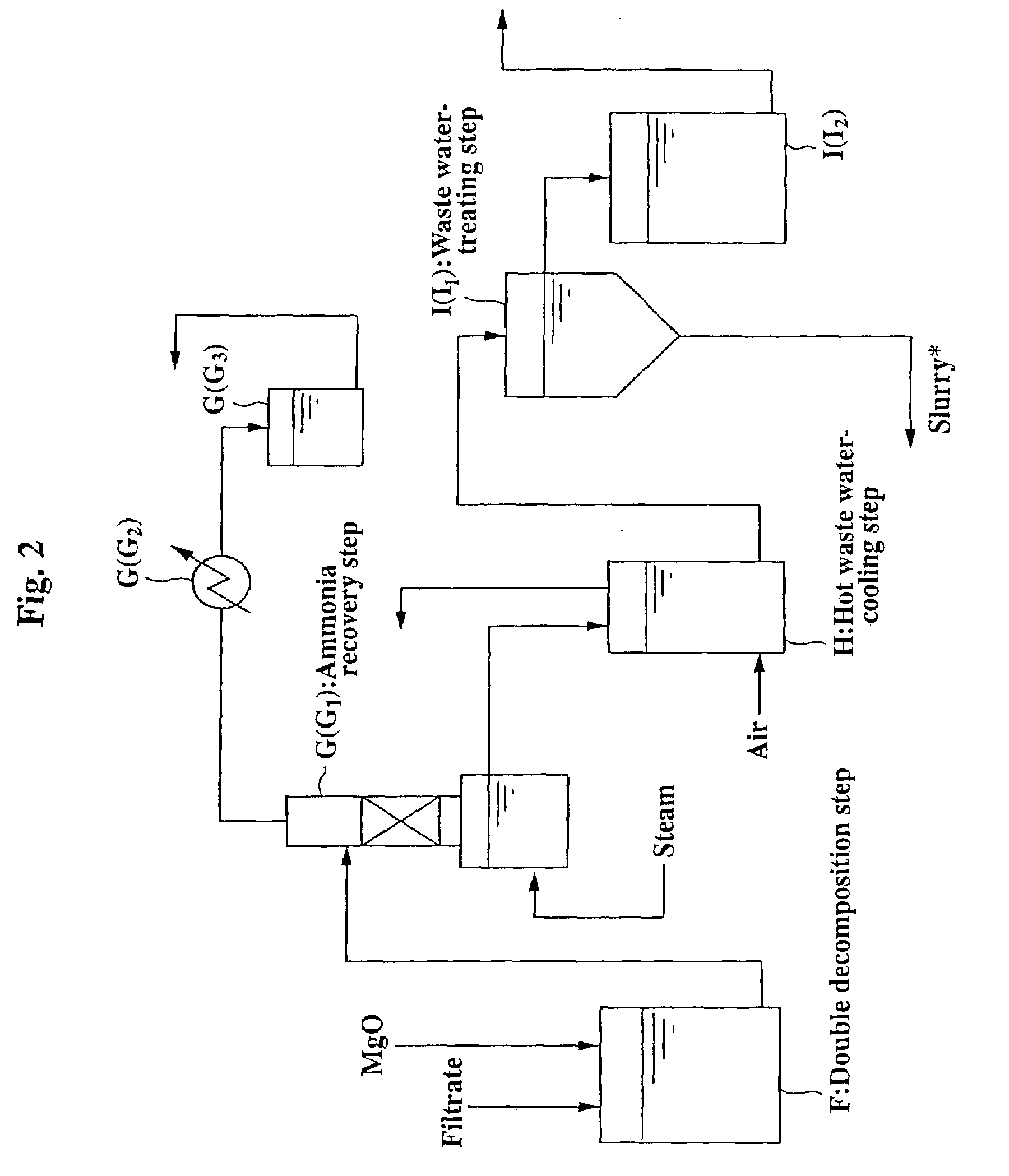Wet-processing method for combustion ashes of petroleum fuels
a petroleum fuel and wet processing technology, applied in the direction of separation processes, vanadium compounds, dissolving, etc., can solve the problems of uneconomical and disadvantageous over-described large-scale processes, and achieve the effects of low carbon content, high vanadium content, and easy operation
- Summary
- Abstract
- Description
- Claims
- Application Information
AI Technical Summary
Benefits of technology
Problems solved by technology
Method used
Image
Examples
example 1
[0052]As the combustion ashes of petroleum fuels, there were used combustion ashes having such a composition (based on dry solids) as shown in Table 3 below which were collected by an electrostatic precipitator disposed at an outlet of exhaust gas passage of a boiler using “ORIMULSION” as a fuel, while adding ammonia to the gas passage.
[0053]
TABLE 3ComponentsCNH4SO4VNiMgwt. %1.018.060.04.51.00.3
[0054]First, in the slurry preparation step (A), the combustion ashes of petroleum fuels and water were mixed together, and then the resultant mixture was heated to 50° C., thereby preparing a slurry of the combustion ashes. It was confirmed that the concentration of ammonium sulfate contained in an aqueous solution obtained by removing solids from the slurry of the combustion ashes was 30% by weight. In the subsequent pH-controlling step (B), the pH value of the slurry was adjusted to 9 by adding thereto aqueous ammonia separated from the below-described ammonia recovery step (G).
[0055]Then,...
PUM
| Property | Measurement | Unit |
|---|---|---|
| temperature | aaaaa | aaaaa |
| temperature | aaaaa | aaaaa |
| temperature | aaaaa | aaaaa |
Abstract
Description
Claims
Application Information
 Login to View More
Login to View More - R&D
- Intellectual Property
- Life Sciences
- Materials
- Tech Scout
- Unparalleled Data Quality
- Higher Quality Content
- 60% Fewer Hallucinations
Browse by: Latest US Patents, China's latest patents, Technical Efficacy Thesaurus, Application Domain, Technology Topic, Popular Technical Reports.
© 2025 PatSnap. All rights reserved.Legal|Privacy policy|Modern Slavery Act Transparency Statement|Sitemap|About US| Contact US: help@patsnap.com


